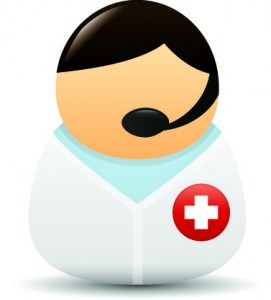Healthcare with Confidence
Pain clinic is engaged in the study and treatment of various kinds of pain.
Pain is an unpleasant feeling, often caused by intense or damaging stimuli. Pain is usually temporary and lasts until the painful stimuli is removed or pathology has healed, some disease states, such as rheumatoid arthritis, peripheral neuropathy, cancer and idiopathic pain may persist for many years.
Our narrow field specialists have years of experience in the treatment of pain of a different nature.
Dr. Silviu Brill is the leading Israeli pain management specialists.
Head of the Institute of acute and chronic pain at Sourasky Medical Center (Ichilov), Tel Aviv

Complex regional pain syndrome (reflex sympathetic dystrophy) is one of the most complex chronic pain syndromes. Very strong pain occurs in one of the extremities (usually after injury) and significantly reduces organ function and quality of life of patients. In addition to pain, can occur other symptoms, such as hypersensitivity as sometimes skin changes color and temperature, and a local movement disorder.
Syndrome is of two types:
CRPS type I – there is no signs of local nerve damage
CRPS type II – When the secondary nerve damage
Prevalence of the syndrome – 20 cases per 100 000 people, 70% of victims are women, whose average age is 30-50.
CRPS symptoms: chronic pain, constant in the damaged area. This pain increases usually with a movement or at the touch of the damaged area. Symptoms are also local changes, color changes, and temperature of the damaged zone, excessive sweating and local swelling, weakness and difficulty in movement of the limbs, trembling.
The nature and types of pain
Neuropathic pain. Caused by damage or disease affecting any part of the nervous system involved in bodily feelings (somatosensory system). Peripheral neuropathic pain is often described as “burning”, “tingling”, “electric shock”, “tingling” or “creepy”.
Phantom pain. Felt in parts of the body, which has been lost or from which the brain no longer receives signals. This is one of the types of neuropathic pain. Phantom limb pain are common oyen with amputation of limbs.
Nociceptive pain. Caused by stimulation of peripheral nerve fibers that respond only to stimuli approaching or exceeding harmful intensity (nociceptors). The most common categories are thermal, mechanical, and chemical stimuli. Nociceptive pain also can be visceral, deep and superficial somatic somatic. Visceral pain is difficult to define, as a rule, often accompanied by nausea and vomiting and can be described as a deep, compressing. Deep somatic pain is initiated by stimulation of nociceptors ligaments, tendons, bones, blood vessels, fascia and muscle, and appears as a dull, aching, poorly localized pain. Examples include sprains and fractures. Superficial pain is caused by activation of nociceptors of the skin or other superficial tissue, it is sharp, well-defined and clearly located. These are examples of injuries that produce superficial somatic pain, including minor wounds and minor burns (first degree).
Some patients experience persistent pain, which vary in intensity and quality, others have several attacks per day, or it may occur only once in a week or two. These pains are often described as crushing, burning or cramping. Such pain can be alleviated to the extent of days, weeks or, sometimes permanently, local anesthetic injections into the nerves or sensitive areas.
Psychogenic pain or somatoform pain. This pain caused by reinforced or extended due to a mental, emotional or behavioral factors. Headache, back pain, abdominal pain, are sometimes psychogenic pain. These pains are not considered less relevant or harmful than pain from any other source.
People with long term pain frequently display psychological disorders – depression and hypochondria (neurotic triad). Often associated with chronic pain patients low self-esteem, and the pain goes away immediately after the decision of the psychological problem.
Paraplegia. Loss of sensation and the ability to control movements from a serious spinal cord injury may be accompanied by pain in the lower back and at the level of spinal cord injury, visceral pain caused by the functions of the bladder or bowel. This phantom body pain is initially begins as a burning or tingling sensation, but can turn into a severe crack or pinching pain, burning, or “screw-knife in the tissue.”
Sudden pain. This transient acute pain that comes suddenly and does not decrease with time. It is common in cancer patients, who often have a background pain, as a rule, well removes drugs.
Episodic (incident) pain. It is a pain that occurs as a result of activities such as the movement of joints affected with arthritis, sprains wounds, etc.
Asymbolia and insensitivity to pain. Episodic analgesia may occur under special circumstances, for example, with waves during sports or war. Soldiers on the battlefield can not feel pain for hours after traumatic amputation or other serious injury.
Diagnosis
Pain is a symptom of many diseases. Knowing the start time, location, intensity, pattern of occurrence (continuous, intermittent, etc.) that enhance or facilitate factors, and quality (burning, sharp pain, etc.) pain, helps our professionals to accurately diagnose the problem.
In addition to the physical examination to measure pain, in some cases, applied MRI brain scans. This diagnostic gives physicians the correct correlation with subjective pain patient.
Pain management
Drug therapy usually includes drugs such as analgesics and anesthetics to treat acute pain.
Chronic pain is much more complex and may require the coordinated efforts of the pain clinic team, which typically includes medical practitioners, clinical psychologists, physiotherapists, occupational therapists and nurses.
In some cases, corticosteroids are used to give relief of pain 80% of patients. MCR drugs such as morphine, prescribed by specialists in the case of very severe pain on an individual basis, when indicated.
Some patients may be recommended an electrical stimulation of the spinal cord.
Physiotherapy treatment aimed at preventing secondary degeneration of the damaged area. Learning the proper operation and use of assistive devices to help improve or restore the functioning of the affected area.
Mini-invasive procedures. In some cases, such as back pain, can be recommended for one of the minimally invasive procedures – percutaneous radiofrequency ablation nucleoplasty or damaged areas that have a good effect and not cause damage to healthy tissues.
Psychological therapy. Cognitive behavioral therapy (CBT) and social support is a very important component, which along with other methods to help our patients experience less pain and adapt to life with the pain in some cases.



